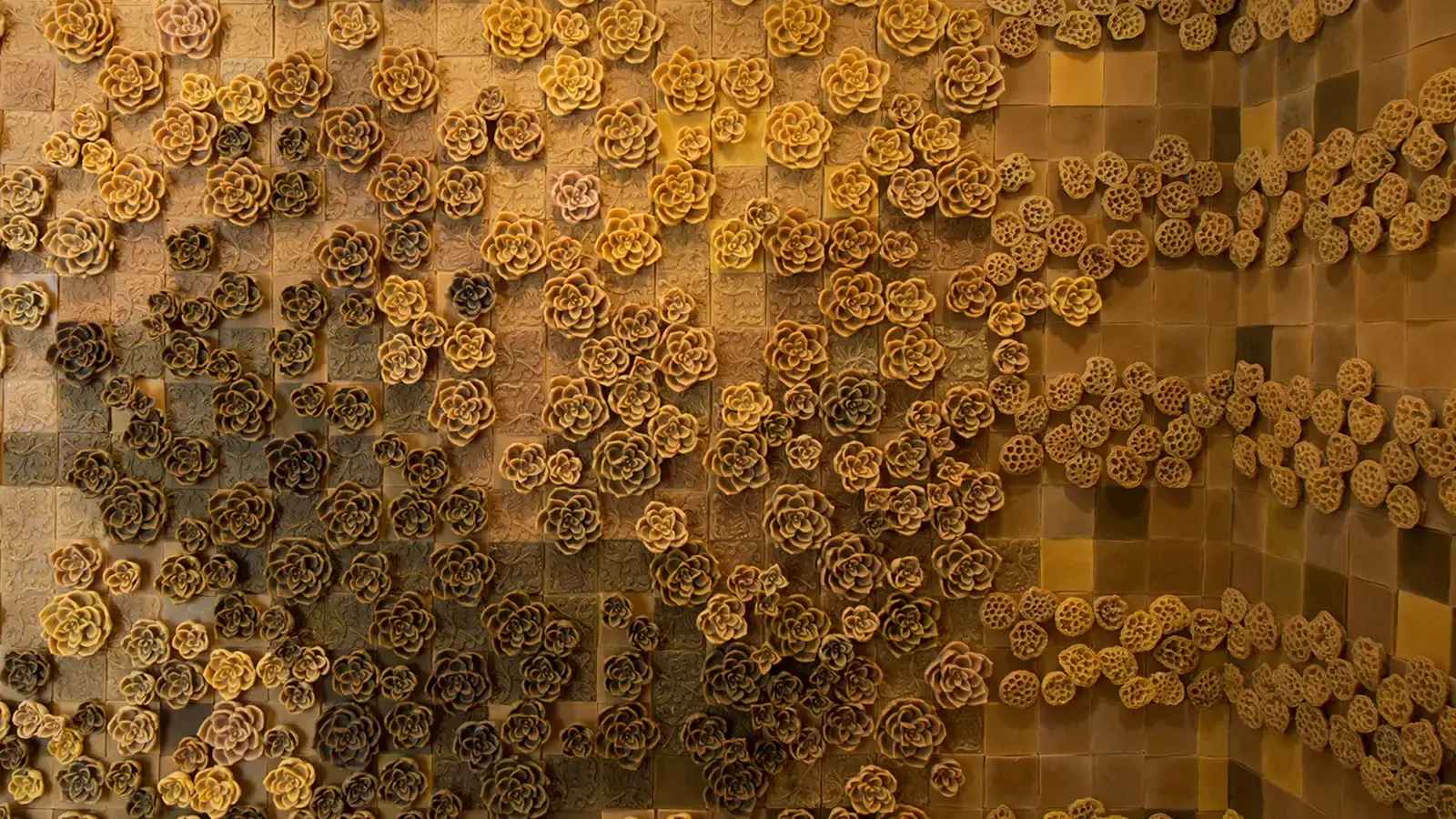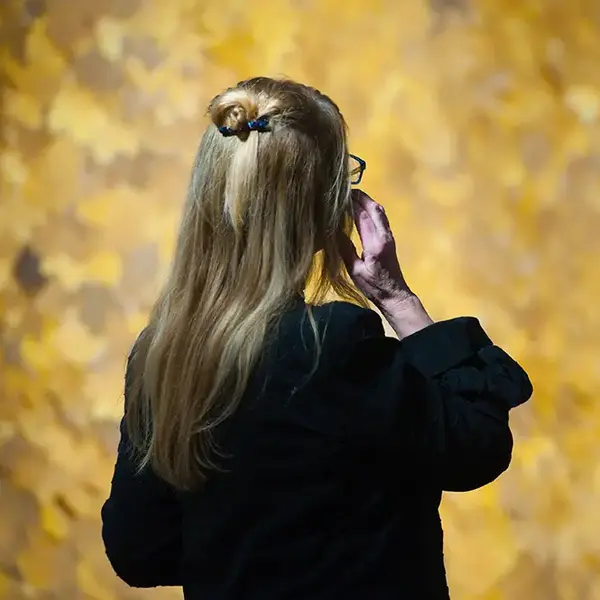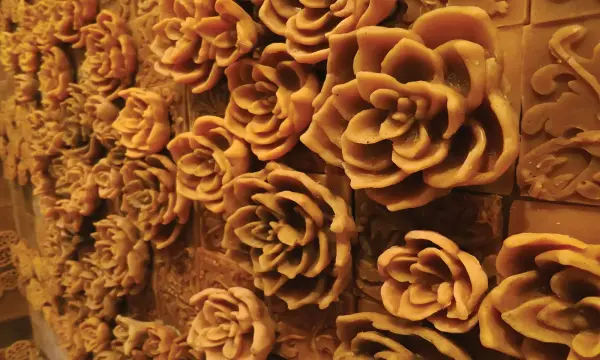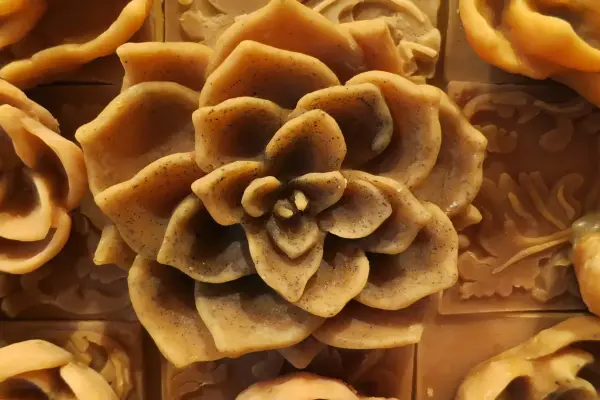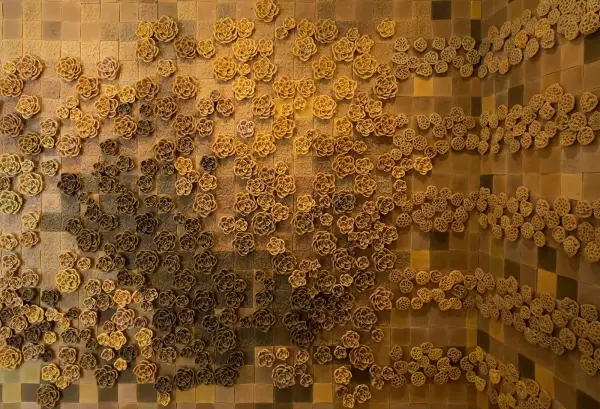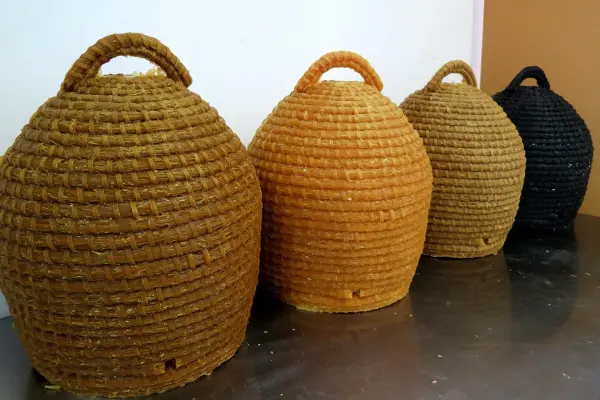Vanitas
The trans-disciplinary practice of Toronto artist Penelope Stewart encompasses architecture, in situ installation, sculpture, photography, drawing and print. In recent years, Stewart has created a series of installations exploring the beehive metaphor in utopian architecture.
Throughout entire rooms, high-relief beeswax tiles are placed on the walls, floor to ceiling, to create imaginary landscapes or cityscapes. Designs reference the ideas of modernist architects and landscape designers who were fascinated by the social model of the beehive, which began to represent a democratic ideal that could be used as a blueprint in the creation of the utopian city. The large beeswax maps enfold the rooms and transform them into sensory spaces. The smell of honey and the colours of the wax trigger both memory and imagination.
For the Koffler Gallery, Stewart creates a site-specific installation that takes her practice into new directions, exploring her beeswax work three-dimensionally and transforming the gallery space into an immersive environment. Beeswax-cast bee skeps (man-made straw beehives) lead the way to a central architectural-scale hive, covered in large tiles. Prominently featuring the grid as a modernist reference, the structure alludes simultaneously to Le Corbusier’s Unité d’habitation and to the rational beehive box used in apiaries.
Accessed through a door, the interior of the hive contains an overflow of baroque beeswax surfaces excessively loaded with floral forms layered with household objects forming a mysterious forensic geology. The objects and flora disrupt and expand the interior until it spills outward. Constructed beeswax vines hang from the top of the hive and from the ceiling into the expanded space of the gallery. This dense overgrowth can be seen from the inside and the outside, and further builds up around the exterior with cast domestic materials and household detritus.
The luscious excess coalesces into a grand still life – a vanitas – a modern ruin reminding of the life and death cycle, the ephemeral nature of all things, and the fragility of our utopian aspirations of transforming nature through culture. The installation speaks of loss but also about expectations. Nothing stays the same, everything is in a constant state of transformation, and ultimately, that is profoundly hopeful.

